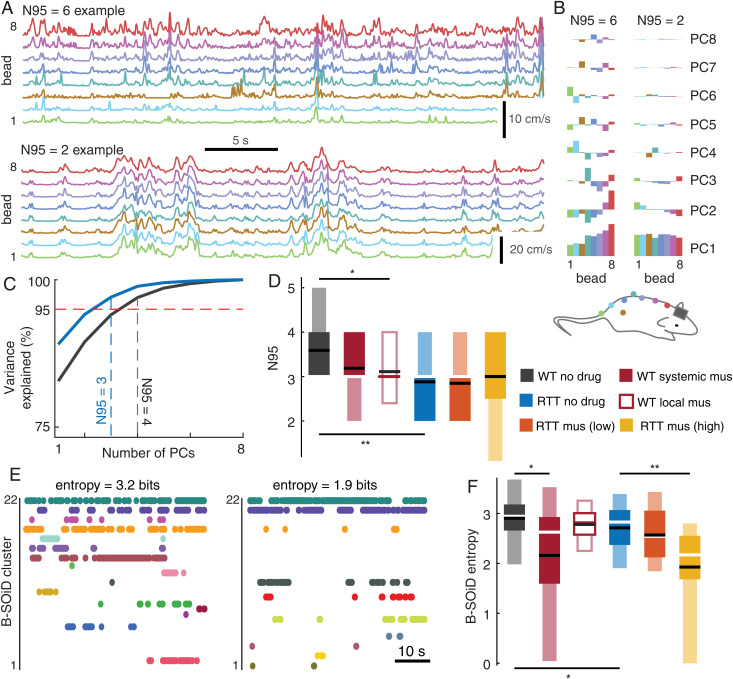Fig. 3.
Reduced body movement complexity due to MeCP2 disruption and excessive inhibition. (A) Examples of tracking bead speed data with higher complexity (Top, speeds less correlated across beads) and lower complexity (Bottom, highly correlated bead speeds). Vertical scales differ for these two examples. (B) Principal components for the two examples in A. Each component is scaled by the variance it explains. Color indicates bead location. For the low-complexity example, note that PC1 has similar contributions from all beads and other PCs explain a relatively small amount of variance. (C) The number of PCs needed to explain 95% of variance, i.e., N95, is lower for less complex body movements. (D) Summary of N95 for all recordings and experimental groups reveals that N95 is highest for the WT rats. N95 is significantly lower for local muscimol application (*P < 0.05, Wilcoxon rank sum) and for RTT rats (**P < 0.01). (E) Two example recordings showing behavioral classification time series from B-SOiD analysis. The example with less complex behavior, i.e., smaller entropy, spends most time in just a few behaviors. (F) Summary of B-SOiD entropy across all recordings and experimental groups. WT rats had the highest entropy. Systemic muscimol application and RTT rats had significantly lower entropy (*P < 0.05). Muscimol also reduced entropy for the RTT group (**P < 0.01).

